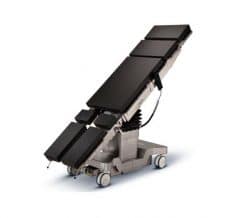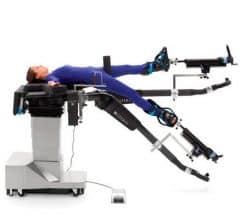An operating table (or surgical table) is used in the operating room to position the patient during a surgical procedure. It is made up of a main platform, on which the patient sits or lies down, and which can be divided into several sections, as well as a central base to adjust the height and inclination of the platform.
There are several possible configurations and adjustments in order to place the patient in a multitude of positions, for example in prone position for spinal surgery or semi-seated for ENT surgery.







